Food in China
Chinese people might be the boldest human beings who would eat anything on this planet. Their food resource is far beyond edible things, but could be horrible somehow to westerners. I bet you have never tried the stinky hairy tofu, chicken's claw, century egg, snake soups, large intestine or fired scorpions. Yet those foods are quite common to see in places like Guangdong, Yunnan, Guizhou and Sichuan, but not every Chinese is courageous enough to have a bite of them.
In fact, with millennia of culinary history, China holds great abundance in foods that are incredibly diverse and varied drastically in different regions. In addition to the variety of ingredients, Chinese cuisine could be made in multiple cooking methods that you could never imagine.
If you have ever enjoyed meals in Chinese restaurants, you may find out that rice and noodles are rather popular staple foods. Due to China's vast territory and d climate, crops plantations are distinctive by regions.
Dry with little rainfall, northern regions of China abound in wheat while south China is rich in rice plantation because of plenty of rainfall. People from southern areas such as Guangzhou, Yunnan, Guilin, Hong Kong and Sichuan are big rice eaters, while noodles are more prevalent in northern areas like Beijing, Xian and Lanzhou. Most Chinese people have three meals a day, and the lunch and supper meals might be accompanied with cold dishes and soups.
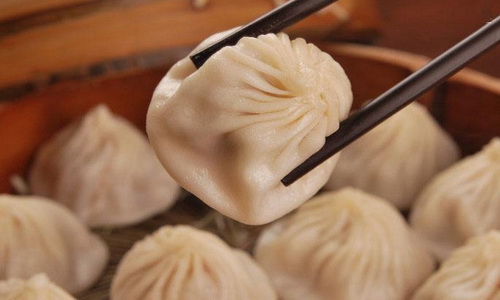
Other than rice and noodles, Chinese people are skilled at creating various other foods, such as tofu, vegetables, eggs, fish, ginger, pork, chicken, beef, millet, buckwheat, bean sprout, duck and seafood. Like turkey for Thanksgiving Day, Chinese also have special foods to celebrate their tradtional festivals, for instance, Zongzi for Dragon Boat Festival, mooncake for Mid-Autumn Festival and classic dumplings for New Year Eve dinner.
The variety of Chinese cuisine types is considered as one of the top three in the world. China is so vast that you could discover massive types of food varied by regions. Here below are 8 best-known traditional Chinese culinary systems with their distinctive features and flavors.
- Canton Cuisine
- Sichuan Cuisine
- Shandong Cuisine
- Jiangsu Cuisine
- Zhejiang Cuisine
- Anhui Cuisine
- Fujian Cuisine
- Hunan Cuisine
Cantonese cuisine usually features cooking methods of braising and stewing, so most Canton dishes have a light and sweet scent to keep the natural flavors of the ingredients, which are extremely friendly to foreigners. If you have ever enjoyed the dim sum in Hong Kong, you will find the beauty of Canton cuisine as it is originated from this culinary system.
Having morning tea with dim sum is a popular custom in Guangzhou and Hong Kong. Tea houses and restaurants are in service from early morning around 5 am to noon, and morning tea is regarded as a way of gathering for families and friends.
Must-try dish: Dim Sum, Pouched Chicken, Char Siu, Preserved Salted Duck, Soups
As the most popular cuisine in China, Sichuan cuisine is best known for its massive use of peppers, chili and garlic, and the biggest features of Sichuan food are spicy and hot. The world famous hotpot just comes out of Sichuan. If you cannot take spice, Sichuan food would be a disaster. However, if you are a spice addict, Sichuan cuisine would throw you on top of the world.
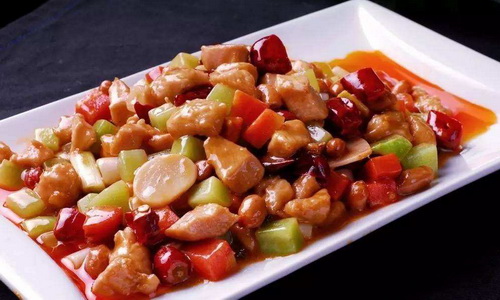
Must-try dish: Mapo Toufu, Kung Pao Chicken, Cola Chicken Wings
Shandong cuisine are popular in cities like Beijing, Tianjin and the other places in northeast China. Regarded as typical northern style of cooking, Shandong cuisine is famous for salty and crispy tastes by adding tons of shallots, scallions and garlics. Common cooking methods mainly include quick-fry and deep-fry to keep the freshness of the ingredient. Adjacent to coast, many of their most famous dishes have seafood as the central ingredient.
Must-try dish: Sweet and Sour Carp, First-Class Tofu, Nine-Coiled Large Intestine
Jiangsu food is generally characterized by light, fresh and sweet flavors. The most used way of cooking is braising, which is dominant in cities like Suzhou, Nanjing and Yangzhou. Cooks focus more on the freshness, nutrition and balanced matches of the food. Near the lower reaches of the Yangtze River, the freshwater fishes are staple foods nearly for all households. Most westerners are fine with this type of cuisine as they are mild and soothing both to the tongue and stomach.
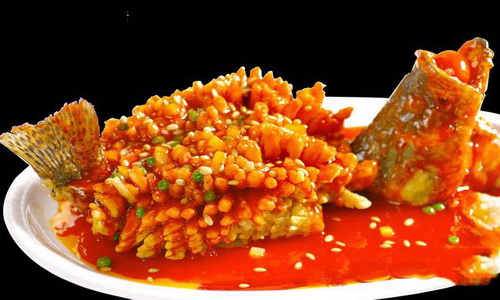
Must-try dish: Red Braised Pork Ribs, Squirrel-Shaped Mandarin Fish, Salted Duck
Zhejiang cuisine features light, mellow and non-greasy flavors by use of techniques including quick-frying, stir-frying and braising. Nestled in Yangtze River Delta, nearly half of the dishes in Zhejiang have freshwater fishes and shrimps that taste crispy and tender. Besides, Zhejiang people loves bamboo shoots so much that you can see it almost in every meal. By the way, the best place to hunt for Zhejiang food is Hangzhou, which is considered as the gourmet's paradise.
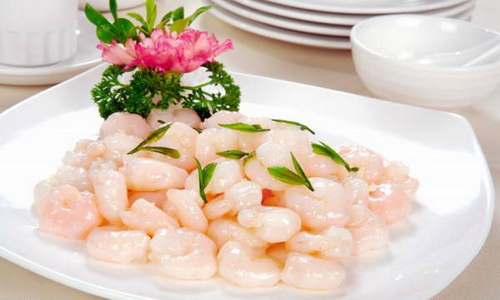
Must-try dish: West Lake Vinegar Fish, Longjing Shrimp, Beggar's Chicken
Subject to the mountainous topography, Anhui cuisine makes use of a lot of wild veggies, animals, and even herbs that grow in the regions around Yellow Mountain. Anhui people get used to having dry mushrooms, fermented bamboo shoots and preserved hams, and the main methods of cooking are stewing and braising by a generous use of oil. Thus most Anhui dishes get a strong, salty, and greasy tastes.
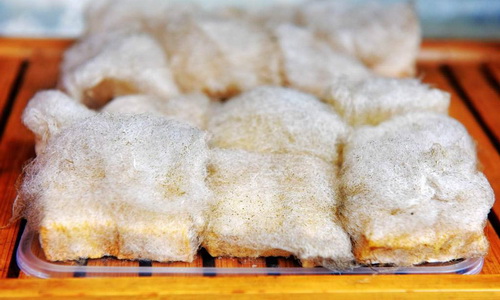
Must-try dish: Stinky Mandarin Fish, Hairy Tofu, Steamed Egg Dumplings
Advantaged by its coastal location, Fujian cuisine takes a variety of fresh seafood like fishes, abalone, sea cucumber, scallops, and lobster as the main course of daily meal. They have a very unique cooking method by picking the living fishes or shrimps with wines to retain the original flavor of ingredients. The most used cooking techniques include stir-frying, baking, and quick-frying, and almost every dish is served with soup.
Must-try dish: Buddha Jumping Over the Wall, Jade Pearl Abalone
Similar to Sichuan cuisine, Hunan cuisine is even more spicy, hot and sour as plenty of dried chilies are used. Most dishes are based on local and seasonal ingredients. Cooking methods including sauting, stir-frying, steaming and smoking are widely utilized to create a strong and rich flavor.
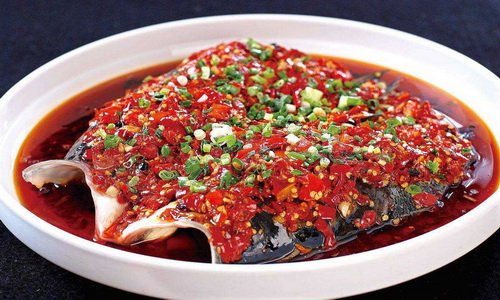
Must-try dish: Dong'an Vinegar Chicken, Chopped Pepper Fish Head
One of the most popular forms of food in China is street food. You can find more than one food quarters nearly in every travel cities of the country. Some bloggers may warn you away from street markets, but a street food adventure in China would let you eat like a local and achieve a one-of-a-kind cultural experience. These vibrant open-air food vendors always serve up some of the cheapest but most authentic gourmets the city has to offer.
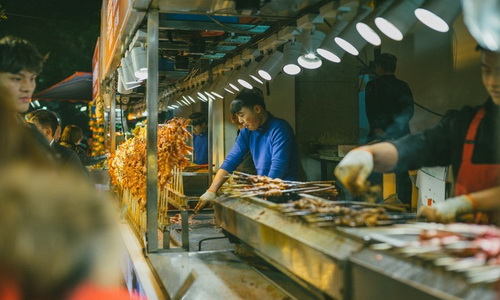
They usually comes to life in the early morning, with hawkers in yo-heave-ho by the side of plastic tables and seats. Whether dinning in a cookshop or street stalls, as a rule of thumb, you are suggested to go somewhere lined with diners that seems never frustrate any food hunters. Hereunder lists some of the most popular food streets in different travel destinations:
Beijing Wangfujing Snack Street, Guijie Street
Xian: Muslim Quarter, Yongxingfang
Shanghai: Old City God Temple
Chengdu: Jinli Old Street, Wide and Narrow Alleys
Hangzhou: Qinghefang Ancient Street
Hong Kong: Temple Street Night Market
Eating itself is a very essential part of the travel experience, and food is a great and important part for a China trip for world gastronomes. In China, a wide and diverse selection of eateries are awaited for your discovery, and here you probably see the most-likely food choices offered to foreign visitors.
- Hotel Breakfast
- Free Food Choice for Lunch and Dinner
- Limited Food Choice in Scenic Area
- Halal Food
- Vegetarian Food
- Homemade Food
For foreign travelers in China, breakfast usually weighs up a lot in your meals a day as some western routine stuff is offered. Though China is blessed with a big variety of delicacies, foreign visitors might take time to get accustomed to them.
The Chinese and western style buffet breakfasts provided by 4-star and 5-star hotels as well as Yangtze River Cruise would be an important backup and option for your eating preference. And that's why hotel breakfasts are included in all our tour packages.
Western style breakfast: milk, butter, bread, salad, sandwich, fried sausage, bacon, coffee, etc.
Chinese style breakfast: steamed stuffed buns, fried dough stick, porridge, soybean milk, pancake, etc.
Usually, lunches and dinners are not included in the tours with us so that travelers could enjoy flexible and free food choice according to their schedules and tastes instead of sticking to a fixed menu. Your guide, also a local food expert, will to recommend you some popular and highly-rated restaurants catering to your appetite and budget. In China, popular restaurants may be thronged with food hunters, and a smart guide would help you to skip the line by making reservations in advance.
The food choices in some remote, rural and mountainous areas are very limited because of the high-cost access to the food resources. In particular, in places like Mt. Hua, Yellow Mountain and Zhangjiajie, goods can only be carried up by manpower. Most Chinese restaurants in scenic area provides simple food in low quality but of high price. The advice from our experienced travelers is to pack some easy-carry foods or snacks on your own, or make do with the western fast food in restaurants like Mcdonald's, KFC and Dicos.
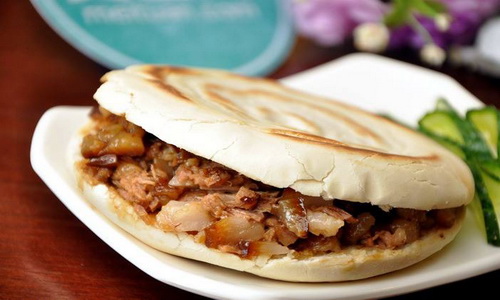
Due to deep-rooted eating habit, some foreign travelers might miss their home food after having too many Chinese dishes. Actually, you could always find some authentic and boutique western restaurants in big cities such as Beijing, Shanghai, Hangzhou, Chengdu, Hong Kong and Xian. Meanwhile, you probably get a large chance to have some western cuisines developed with Chinese flavor. Fast food restaurants like Burger King, Subway and KFC could be an economical and easy choice, too.
Since there is a large population of Muslims across the country, halal restaurants could be found everywhere, especially more in Chinese northern regions including Xinjiang, Qinghai, Ningxia, Shaanxi, Gansu and Henan. Both upscale halal restaurants and small street vendors (like the Lanzhou Hand-Pulled Noodles Restaurant 兰州拉面) could be found in every city.
In the famous Muslim Street of Xian, you would even be spoiled by hundreds of restaurants and stalls only for halal food and snacks. Besides, Yangtze River cruise ships can prepare halal food for you, and you should inform the travel operator or the ship crew of your dinning requests beforehand.
For vegans, vegetarian food is widely accessible in China. Chinese Buddhists are most vegetarians following strict diet teachings. Vegetarian food is also popular among health-conscious non-vegetarians for it is viewed as a balanced way of eating to keep fit. Apart from common vegetables, Chinese vegetarian food is greatly enriched by ingredients like soybean, tofu, nuts and wild plants.
And incredibly, Chinese people are good at making vegetarian dishes with flavors and colors resembling meat and seafood. Most Chinese vegetarian restaurants are in fancy setting, offering exquisite dishes at a relatively high price. If it's hard to find one on your own, let your guide help to locate the best rated vegetarian restaurants for you.
Foreign travelers can hardly get a chance to walk into a local family, let alone capture an insight into the real deal that common people eat daily. However, if you travel with Elysian Tour, we would arrange a family visit for you to enjoy a homemade meal in a local household, and even join in a cooking class of Chinese dumplings in an old cave dwelling in Xian. Destinations like Shanghai and Yangshuo are also available for cooking classes of local specialties.









